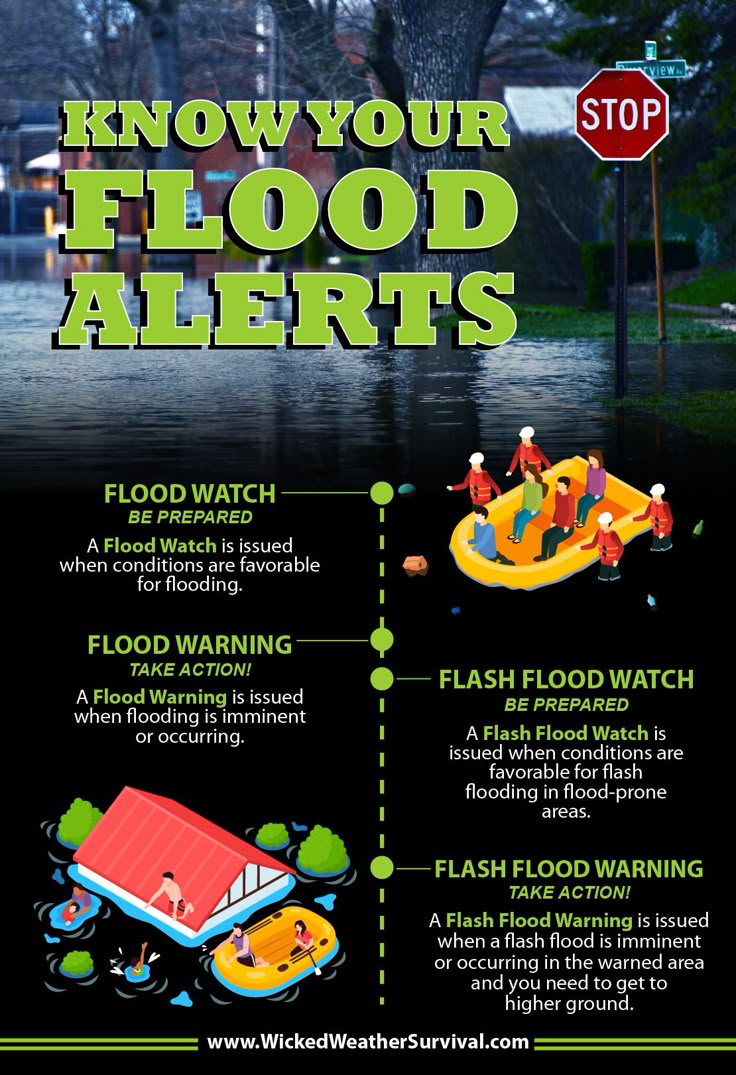Flash Flood Emergency Preparedness: Protecting Yourself And Your Family

Table of Contents
Understanding Flash Flood Risks
Knowing your area's flood risk is the first step in effective flash flood emergency preparedness. Understanding the potential dangers allows you to make informed decisions and take preventative measures.
Identifying High-Risk Areas
Many factors contribute to flash flood risk. Identifying these high-risk areas is key to effective planning.
- Use the FEMA Flood Map Service to identify your risk: The Federal Emergency Management Agency (FEMA) provides detailed flood maps for the entire United States. These maps indicate areas with varying degrees of flood risk, allowing you to assess your vulnerability. Knowing your flood zone is a crucial part of flash flood preparedness.
- Look for signs of past flooding in your neighborhood (watermarks, debris): Observe your surroundings for evidence of previous flooding. Watermarks on buildings or the presence of debris can indicate areas prone to flash floods.
- Consider proximity to rivers, streams, and low-lying areas: Homes situated near rivers, streams, or in low-lying areas are inherently more susceptible to flash flooding. These areas experience rapid water accumulation during heavy rainfall.
Recognizing Flash Flood Warning Signs
Recognizing the early warning signs of a flash flood is critical for timely action. Early detection can significantly increase your chances of safe evacuation and minimize potential harm.
- Sudden heavy rainfall: A rapid increase in rainfall intensity, especially after a prolonged dry spell, is a major indicator of potential flash flooding.
- Rapidly rising water levels in streams or rivers: Observe the water levels in nearby streams and rivers. A sudden and dramatic increase in water levels signifies an imminent flash flood threat.
- Reports of flooding in your area from local authorities: Pay close attention to weather alerts and warnings issued by local authorities. These alerts are crucial for timely evacuation.
- Unusual water sounds like rushing water: The sound of rapidly flowing water, even if it's not immediately visible, can signal impending danger. Heed these auditory warnings and take appropriate action.
Creating a Flash Flood Emergency Plan
Proactive planning is the cornerstone of successful flash flood emergency preparedness. A well-defined plan minimizes confusion and maximizes your chances of survival.
Develop an Evacuation Plan
Having a pre-determined evacuation plan is essential for quick and safe escape.
- Identify multiple escape routes from your home: Plan more than one route to ensure you have alternatives in case one is blocked by floodwaters.
- Choose a safe meeting place outside of the flood zone: Designate a location outside the high-risk flood area where family members can meet after evacuation.
- Practice your evacuation plan with your family: Regularly practice your plan to ensure everyone knows the routes, meeting place, and procedures. This familiarity reduces stress and improves response time during an emergency.
Assemble an Emergency Kit
Having a well-stocked emergency kit is critical for survival during and after a flash flood.
- Water (one gallon per person per day): Ensure sufficient water for drinking and sanitation for at least 72 hours.
- Non-perishable food: Include non-perishable food items with a long shelf life.
- First-aid kit and medications: A comprehensive first-aid kit is essential for treating minor injuries. Include any necessary prescription medications.
- Flashlight and extra batteries: Reliable lighting is crucial during power outages.
- Radio (battery-powered or hand-crank): Stay informed about the situation through weather reports and emergency broadcasts.
- Important documents (copies in a waterproof bag): Keep copies of essential documents, such as insurance information and identification, in a waterproof container.
Protecting Your Property
Taking steps to protect your property minimizes potential damage during a flash flood.
- Elevate valuable items: Move valuable belongings to higher floors or shelves to protect them from floodwaters.
- Install flood barriers or sandbags (if time allows): If time permits, install flood barriers or sandbags to help protect your home's perimeter.
- Move furniture and appliances away from potential floodwaters: Relocate furniture and appliances to higher ground to prevent damage.
- Protect your electrical systems: Disconnect electrical appliances and circuits to prevent electrical hazards.
During a Flash Flood
Immediate action is paramount during a flash flood. Swift and decisive steps significantly increase the chances of survival.
Immediate Actions
When a flash flood warning is issued, immediate action is critical.
- Move to higher ground immediately: Evacuate to higher ground as quickly and safely as possible.
- Do not attempt to drive or walk through flooded areas: Never underestimate the power of floodwaters. Even shallow water can conceal dangerous currents.
- Turn off utilities if it's safe to do so: Shut off gas, electricity, and water if it's safe to do so, preventing further damage and hazards.
- Monitor weather reports for updates: Stay informed about the evolving situation through continuous weather updates.
Staying Safe During Evacuation
Prioritize safety during your evacuation.
- Follow instructions from emergency personnel: Obey instructions from emergency responders and authorities.
- Avoid downed power lines and debris: Be cautious of hazards such as downed power lines and debris carried by floodwaters.
- Be aware of the dangers of swift-moving water: Never underestimate the force of moving water; it can easily knock you off your feet.
- Stay informed about changing conditions: Continuously monitor weather reports and updates from local authorities.
After a Flash Flood
Post-flood recovery requires careful planning and caution.
Assessing Damage and Seeking Help
After the floodwaters recede, assess the damage and seek assistance if needed.
- Check for structural damage to your home: Carefully inspect your home for structural damage before re-entering.
- Contact your insurance company: Report the damage to your insurance company as soon as possible to initiate the claims process.
- Report damage to local authorities: Report damage to local authorities to facilitate community-wide recovery efforts.
- Avoid entering flood-damaged buildings: Avoid entering buildings that have been affected by floodwaters due to structural instability and potential health hazards.
Cleaning Up Safely
Cleaning up after a flash flood requires careful consideration of safety measures.
- Wear protective gear (gloves, boots, mask): Protect yourself from potential hazards like bacteria, mold, and sharp objects.
- Dispose of contaminated materials properly: Dispose of contaminated materials according to local guidelines.
- Be aware of potential health hazards (mold, bacteria): Be mindful of potential health risks associated with contaminated materials.
- Be cautious of weakened structures: Be cautious of weakened structures that may pose a risk of collapse.
Conclusion
Flash flood emergency preparedness is not just about survival; it’s about safeguarding your family’s well-being and protecting your property. By understanding the risks, creating a comprehensive plan, and taking proactive steps, you significantly reduce the impact of a flash flood. Remember to regularly review and update your flash flood emergency preparedness plan to ensure its effectiveness. Don't wait until it's too late; take action today and secure your family's future with a robust flash flood emergency preparedness strategy. Learn more about effective flash flood emergency preparedness strategies by visiting [link to relevant resource].

Featured Posts
-
 Myrtle Beach Hit And Run Arrest Made In Deadly Crash
May 25, 2025
Myrtle Beach Hit And Run Arrest Made In Deadly Crash
May 25, 2025 -
 Aex Rally Na Trump Uitstel Analyse Van De Stijging
May 25, 2025
Aex Rally Na Trump Uitstel Analyse Van De Stijging
May 25, 2025 -
 Annie Kilners Engagement Ring A Look At The Jewellery Following Kyle Walker Rumours
May 25, 2025
Annie Kilners Engagement Ring A Look At The Jewellery Following Kyle Walker Rumours
May 25, 2025 -
 Top 10 Uomini Piu Ricchi Del Mondo Classifica Forbes 2025 Sorprese E Cambiamenti
May 25, 2025
Top 10 Uomini Piu Ricchi Del Mondo Classifica Forbes 2025 Sorprese E Cambiamenti
May 25, 2025 -
 The Milan Party Kyle Walkers Actions After Wife Annie Kilners Return
May 25, 2025
The Milan Party Kyle Walkers Actions After Wife Annie Kilners Return
May 25, 2025
Latest Posts
-
 Mandarin Killings Reveal Hells Angels Evolving Business Strategies
May 25, 2025
Mandarin Killings Reveal Hells Angels Evolving Business Strategies
May 25, 2025 -
 Hells Angels New Business Model Insights From Mandarin Killings
May 25, 2025
Hells Angels New Business Model Insights From Mandarin Killings
May 25, 2025 -
 Mandarin Killing Highlights Hells Angels New Business Model
May 25, 2025
Mandarin Killing Highlights Hells Angels New Business Model
May 25, 2025 -
 The Impact Of Tariffs On The Federal Reserve Powells Concerns
May 25, 2025
The Impact Of Tariffs On The Federal Reserve Powells Concerns
May 25, 2025 -
 Fed Chair Powell On Tariffs A Potential Economic Crisis
May 25, 2025
Fed Chair Powell On Tariffs A Potential Economic Crisis
May 25, 2025
